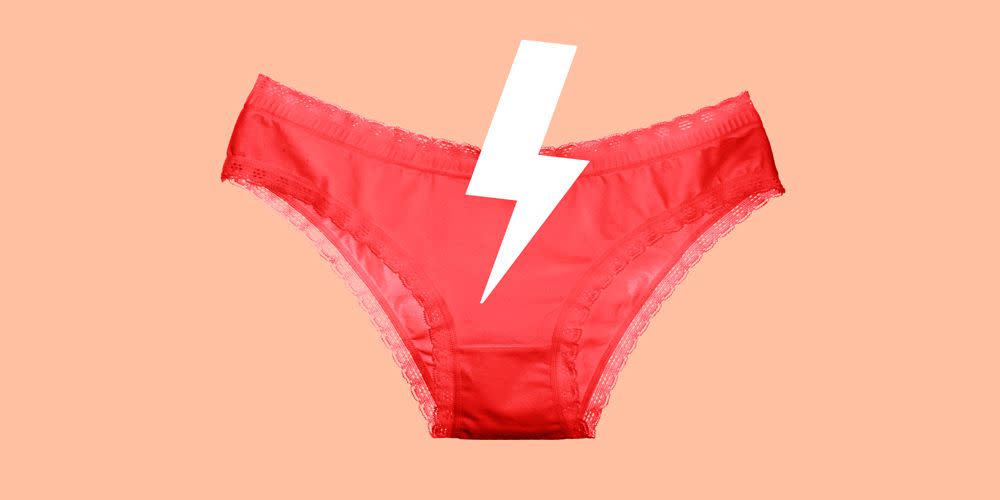Are Ovulation Cramps Normal?

You know that joke, usually used when you feel something super specific that doesn't seem to have a name, that goes, what's the German word for _____? For ovulation cramps, that joke holds up.
Referred to in the medical community as mittelschermz - German for "middle pain," how appropriate! - ovulation cramps are the pain some people feel mid-way through the menstrual cycle, at the approximate time of ovulation. According to Dr. Rebecca Brightman, an ob-gyn in New York City, it's an extremely common diagnosis. Here's everything you need to know about the second set of cramps no one asked for.
What causes ovulation pain
Like... literally so many women's health issues, experts haven't figured out the exact cause of mittelschermz, according to Mayo Clinic. But there are some theories related to what all is taking place in the uterus and ovaries during ovulation that may explain it.
As Brightman explained, during ovulation, a follicle in one of your ovaries ruptures and releases an egg. The follicles are filled with fluid and reach their largest diameter just before ovulation. Brightman hypothesizes that the fluid in those follicles can cause a bit of irritation, producing cramp-like pain in the middle of your menstrual cycle (or about two weeks before your next period).
Another theory is related to the growth of the follicle, like Brightman mentioned. The growth of your follicle may stretch the surface of your ovary, which would also cause pain.
The important takeaway is that it's only mittelschmerz if it's happening in the middle of your cycle. Cramping unrelated to ovulation is something different, and if you experience cramps at random times throughout your cycle regularly, you should discuss that with your doctor.
What does ovulation pain feel like?
It feels a whole lot like period cramps, but slightly different. You'll feel that same, distinctly period cramp-y dull feeling in your lower abdomen, but Brightman said you may only feel it on one side. Some women say they feel this in their lower back more than in their lower abdomen, and Brightman said that's totally normal - everyone's symptoms are different.
Brightman said other symptoms are normal, too. You may feel slight bloating in your lower abdomen and even experience a bit of vaginal bleeding or discharge. What's important is that all of this should resolve within two days, tops. If it persists longer, or is too painful for an over-the-counter NSAID like ibuprofen to handle, mention it to your doctor.
You should be able ease ovulation pain in the same way you deal with period cramps: Ibuprofen, heating pads, drinking lots of water, and muscling your way through it. The good news with these cramps is that they're typically less severe than period cramps, and don't last for nearly as long.
What isn't normal
Again, ovulation pain that lasts for more than two days or is severe and debilitating is worth talking to your doctor about. That could be a sign of any number of pelvic pain disorders, from polycystic ovarian syndrome to endometriosis.
The same goes for non-period and non-ovulation cramping. Besides, do you want to experience an inordinate amount of cramping if you don't have to? Of COURSE not. The best thing you can do in any and all circumstances is talk to you doctor to see if something painful that feels normal to you is not actually normal, and can therefore potentially be fixed.
Life with a period is hard enough as it is. Don't make it even harder by dealing with extra pain!
Follow Hannah on Twitter.
You Might Also Like

